In recent years, the contact grill market has seen a surge in popularity, driven by the increasing demand for made-to-order cuisine. This fusion of technology and culinary artistry has transformed the way we cook and enjoy our meals, offering a level of convenience and customization that was once unimaginable. As we delve into the intricacies of this burgeoning industry, it becomes evident that the contact grill’s rise is not just a fleeting trend but a testament to the evolving landscape of food preparation and consumer preferences.
Introduction to Contact Grills in the US Market
In the heart of the American kitchen, contact grills have become a staple in the culinary landscape. These compact, countertop cooking appliances have soared in popularity, transforming the way Americans enjoy their meals. Offering a unique combination of convenience and the ability to achieve that perfect sear, contact grills have carved out a niche in the bustling market of kitchen appliances.
Initially seen as a niche product, contact grills have now become a go-to choice for both seasoned chefs and casual cooks alike. The sleek design and ease of use have made them a favorite for those looking to add a touch of flair to their home cooking without the need for a full-sized grill or oven. Whether it’s a busy weekday or a weekend barbecue, contact grills provide a quick and efficient solution for cooking a variety of foods.
The appeal of contact grills lies in their ability to cook food evenly on both sides simultaneously. This feature is particularly attractive to those who love the texture and flavor that a grill can impart to meats, vegetables, and even sandwiches. The even cooking ensures that each piece of food is perfectly charred and juicy, which is often a challenge when cooking on a stovetop or in a conventional oven.
The US market has seen a significant uptick in the sales of contact grills, driven by several factors. Firstly, the convenience factor is undeniable. With busy lifestyles and the rise of meal prep services, consumers are increasingly looking for appliances that can help them create restaurant-quality meals at home with minimal effort. Contact grills fit this bill perfectly, allowing for a quick and easy cooking process that doesn’t require constant monitoring.
Secondly, the versatility of contact grills is a major draw. They can be used to cook a wide range of foods, from steak and burgers to vegetables and even pita sandwiches. This adaptability makes them a versatile addition to any kitchen, whether it’s for a family dinner or a solo meal.
Moreover, the health-conscious consumer market has also played a significant role in the growth of contact grills. With a focus on grilling over frying, these appliances offer a healthier alternative for cooking. The reduced need for oil means that meals can be prepared with less fat, which is a win for those looking to maintain a healthy diet.
As the market has expanded, so too have the features and designs of contact grills. Modern models often come with adjustable heat settings, non-stick surfaces, and removable drip trays for easy cleanup. Some even include features like indicator lights to show when the grill is at the optimal temperature for cooking.
In terms of market share, contact grills have seen a notable increase over the past few years. According to industry reports, sales of contact grills have grown by double digits annually, with no signs of slowing down. This surge can be attributed to the growing trend of made-to-order cuisine, which has been embraced by a new generation of consumers.
Made-to-order meals have gained popularity due to their customizable nature and the perceived freshness of the ingredients. Contact grills are perfectly suited for this trend, as they allow for the creation of personalized meals quickly and efficiently. From customizing the level of doneness to adding unique spices and herbs, contact grills offer the flexibility that made-to-order enthusiasts crave.
The success of contact grills in the US market is not just a reflection of the convenience they offer; it’s also a testament to the evolving culinary landscape. As Americans continue to seek out innovative cooking solutions that fit their lifestyle, contact grills have emerged as a favorite choice. The rise of these appliances has also prompted manufacturers to innovate further, leading to a variety of new designs and features that cater to the diverse needs of consumers.
In conclusion, contact grills have become an integral part of the American kitchen, offering a unique blend of convenience, health benefits, and culinary versatility. With the continued growth of made-to-order cuisine, it’s clear that contact grills are here to stay, providing a delicious and efficient way to cook for years to come.
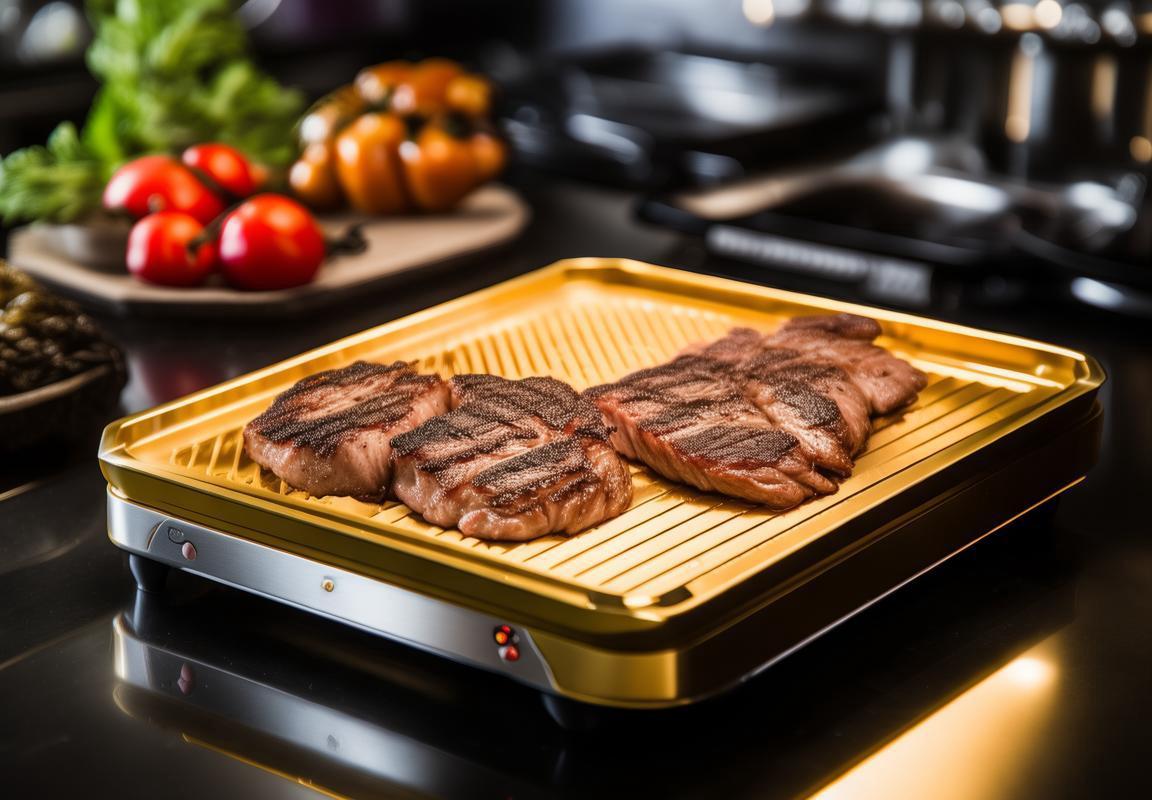
The Rise of Made-to-Order Cuisine: A Trend in Contact Grill Usage
In the ever-evolving landscape of culinary preferences, the rise of made-to-order cuisine has become a significant trend, particularly in the realm of contact grill usage. This phenomenon has not only transformed the way consumers experience food but has also reshaped the landscape of the kitchen appliances industry.
The emphasis on customization and individuality in food choices has led to a surge in demand for contact grills that can cater to these specific needs. These grills, known for their even heat distribution and ability to seal in flavors, have become the go-to choice for home chefs and professional cooks alike.
One of the key drivers behind this trend is the growing awareness among consumers about health and wellness. Made-to-order meals often imply a level of control over ingredients, allowing individuals to tailor their dishes to dietary restrictions or preferences. Contact grills, with their ability to cook a variety of proteins, vegetables, and grains with precision, have become the perfect tool for this culinary approach.
Social media has also played a pivotal role in popularizing made-to-order cuisine. Influencers and food enthusiasts often share their creations on platforms like Instagram and TikTok, showcasing the versatility and ease of use of contact grills. This has not only inspired a new generation of home cooks but has also sparked a community around the art of cooking.
Moreover, the convenience factor cannot be overlooked. With busy lifestyles becoming the norm, the allure of a quick and easy meal that is also customizable is undeniable. Contact grills offer a solution that is both time-saving and satisfying, as they can cook a variety of ingredients simultaneously, reducing meal preparation time.
In the commercial sector, made-to-order cuisine has become a cornerstone of fast-casual dining. Restaurant chains and food trucks are increasingly offering customizable meal options, where customers can select from a range of toppings and ingredients. Contact grills have become a staple in these establishments, ensuring consistent and high-quality results.
The trend extends beyond just proteins and vegetables; it has also influenced the way contact grills are used. From traditional grilling techniques to innovative methods like sous-vide and smoking, these appliances have become the centerpiece of culinary experimentation. Chefs and home cooks are now using contact grills to achieve a wide range of textures and flavors, pushing the boundaries of traditional grilling.
The technology behind contact grills has also evolved to accommodate this shift. Features like adjustable heat settings, non-stick surfaces, and built-in timers have made these appliances more user-friendly and adaptable to a variety of cooking styles. Additionally, the introduction of smart grills that can be controlled via apps has brought a new level of convenience, allowing users to start cooking remotely and track the progress of their meals.
Despite the rise of made-to-order cuisine, challenges remain. Ensuring consistency in flavor and texture across different batches of food can be difficult, especially in a busy kitchen environment. However, manufacturers are continually working to address these issues, developing new technologies and materials that enhance the performance and durability of contact grills.
Another important aspect is the environmental impact of cooking methods. As sustainability becomes a more pressing concern, contact grill manufacturers are exploring ways to make their appliances more energy-efficient and eco-friendly. This includes using recycled materials, reducing energy consumption, and promoting recycling programs for old appliances.
In conclusion, the rise of made-to-order cuisine has significantly impacted the way contact grills are used. From the home kitchen to commercial settings, these appliances have become a versatile tool for chefs and cooks seeking to offer customized, healthy, and convenient meals. As technology continues to advance, the future of contact grills looks promising, with even more innovative cooking methods and sustainable features on the horizon.
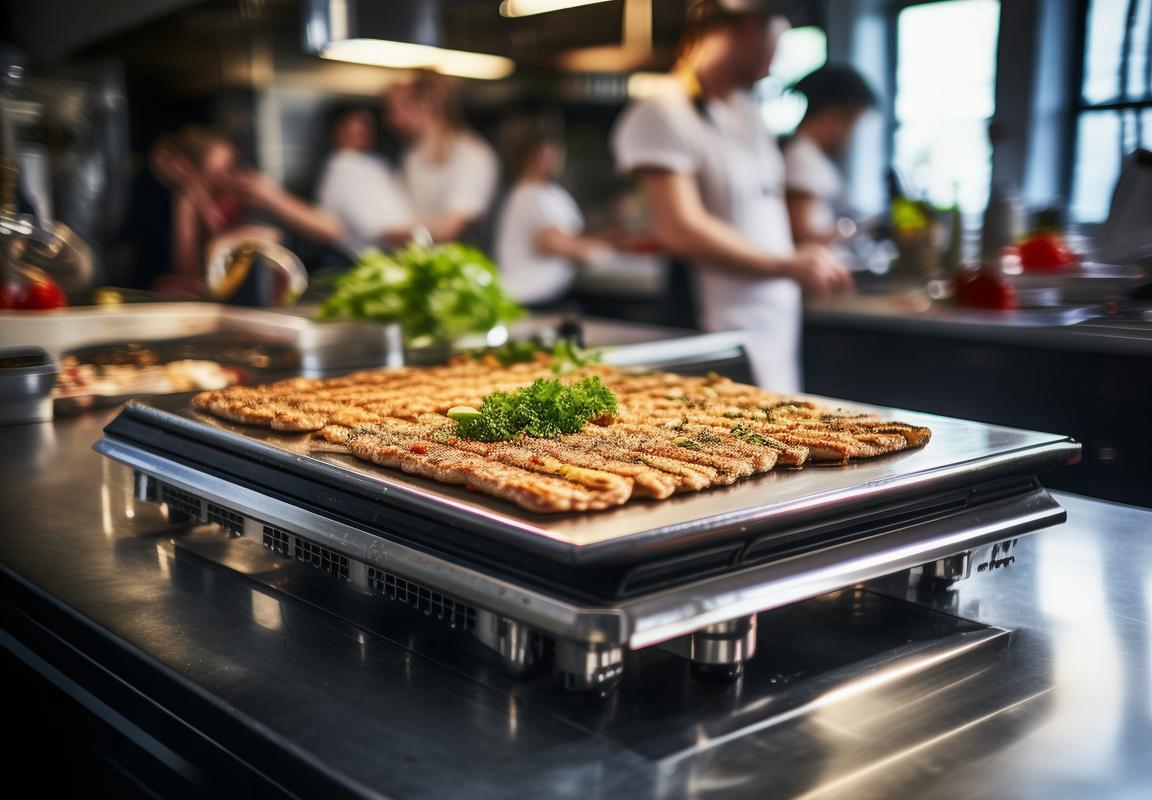
Understanding the European Market’s Appetite for Contact Grills
The European market has long been known for its discerning consumers and diverse culinary landscapes. When it comes to contact grills, this trend extends to a unique appetite for these versatile cooking appliances. Here’s a closer look at what makes the European market so receptive to contact grills.
European consumers have a reputation for appreciating high-quality, health-conscious products. Contact grills, with their ability to cook food with minimal oil, align perfectly with this preference. The health benefits of grilling, such as lower fat content compared to frying, have made contact grills a popular choice among health-conscious individuals across the continent.
The European kitchen culture is deeply rooted in outdoor cooking and social gatherings. From the Mediterranean to the Scandinavian countries, there’s a strong tradition of enjoying meals in outdoor settings. Contact grills offer a convenient and efficient way to prepare delicious meals in these environments, making them a staple in many European households.
In recent years, there has been a significant shift towards convenience and efficiency in cooking. Contact grills are compact, easy to use, and require minimal cleanup, which appeals to busy professionals and families alike. The European market has seen a surge in demand for these appliances as they cater to the fast-paced lifestyle that many Europeans lead.
European consumers also have a penchant for innovation and technology. Contact grills that come with advanced features, such as adjustable heat settings, non-stick surfaces, and temperature controls, are highly sought after. The European market’s appetite for these features reflects a desire for modern, user-friendly appliances that enhance the cooking experience.
The European market is incredibly diverse, with each country having its own unique culinary traditions. This diversity has led to a demand for contact grills that can accommodate various cooking styles and ingredients. From the rich flavors of Italian cuisine to the hearty dishes of German and Scandinavian kitchens, contact grills offer a versatile solution that can cater to a wide range of tastes.
Sustainability is another key factor driving the European market’s interest in contact grills. As environmental concerns grow, consumers are increasingly looking for appliances that are energy-efficient and have a lower carbon footprint. Contact grills, which use less oil and can be easily cleaned, are seen as eco-friendly options that align with the values of sustainability.
The European market also values customization and personalization. Contact grills that offer a variety of attachments and accessories, such as different grill plates and skewers, allow consumers to tailor their cooking experience to their specific preferences. This level of customization is highly appealing to the European consumer, who seeks both functionality and enjoyment in their cooking appliances.
Branding and marketing play a crucial role in the European market. Companies that have successfully captured the market’s attention often do so by emphasizing the unique selling points of their contact grills. Whether it’s through highlighting the appliance’s health benefits, convenience, or innovative features, effective branding has a significant impact on consumer purchasing decisions.
Lastly, the European market’s interest in contact grills is also influenced by the rise of home entertaining and the popularity of cooking shows. As more people take pride in their culinary skills and share their passion for cooking with friends and family, the demand for quality cooking appliances, like contact grills, continues to grow.
In conclusion, the European market’s appetite for contact grills is driven by a combination of health consciousness, outdoor cooking traditions, convenience, technological innovation, culinary diversity, sustainability, customization, and effective branding. As these factors continue to shape consumer preferences, the European market is poised to remain a key player in the global contact grill industry.

Key Factors Driving the Growth of Made-to-Order Contact Grills
The growth of made-to-order contact grills can be attributed to several pivotal factors that have collectively transformed the landscape of the European market. These elements range from shifting consumer preferences to technological advancements, all of which have played a significant role in propelling the demand for these specialized kitchen appliances.
Gone are the days when cooking was a one-size-fits-all endeavor. Today, consumers are increasingly seeking personalized and customized experiences, including their culinary adventures. This shift has been a catalyst for the rise of made-to-order contact grills, as they offer a level of flexibility and control over the cooking process that traditional grills simply cannot match.
Health consciousness has become a cornerstone of the modern European diet, with consumers gravitating towards food that is fresh, nutritious, and low in processed ingredients. Made-to-order contact grills allow users to cook with minimal oil and at precise temperatures, ensuring that meals are not only healthier but also retain the full flavor of the ingredients.
Technology has also played a pivotal role in the growth of made-to-order contact grills. Smart features like temperature control and precise cooking times have become standard, allowing even the most novice of chefs to produce restaurant-quality meals at home. The integration of IoT (Internet of Things) has made these grills part of a larger ecosystem, where they can be monitored and controlled remotely via smartphone apps.
Economic factors have not been overlooked in this growth trajectory. As the cost of living rises, consumers are seeking out cost-effective solutions for home cooking. Made-to-order contact grills offer a way to enjoy a wide variety of dishes without the need for a myriad of specialized appliances, thus providing both convenience and savings.
Sustainability is another key driver. The environmental impact of food production and consumption is a major concern, and made-to-order contact grills encourage more mindful cooking practices. They can help reduce food waste by allowing for smaller, portion-sized meals, and by cooking only what is needed.
The demand for convenience is at an all-time high, especially in Europe’s bustling urban centers. With longer work hours and the pursuit of a balanced lifestyle, consumers are looking for quick and efficient ways to prepare meals. Made-to-order contact grills fit this need perfectly, offering the possibility of cooking a wide range of dishes in a short amount of time without the need for elaborate cooking techniques.
Culinary trends have also had a significant influence. The popularity of gourmet street food and ethnic cuisine has sparked a newfound interest in unique flavors and cooking methods. Contact grills have become a preferred tool for chefs and home cooks alike to replicate the authentic taste of street foods and international dishes.
The emphasis on social dining experiences has not been left out either. Made-to-order contact grills are not just cooking devices; they are social catalysts. They bring families and friends together around the kitchen counter, fostering a communal spirit that is highly valued in European culture.
Moreover, the accessibility of information and recipes has democratized the culinary world. With the internet at our fingertips, anyone can now access a treasure trove of recipes and cooking techniques. Made-to-order contact grills have made it easier than ever for individuals to try out these recipes and bring them to life in their own homes.
Lastly, the global influence of celebrity chefs and cooking shows cannot be underestimated. These personalities have become synonymous with culinary innovation, and their endorsements of made-to-order contact grills have helped to normalize their usage and acceptance in mainstream kitchens.
In summary, the growth of made-to-order contact grills in Europe is a multifaceted phenomenon, driven by health consciousness, technological innovation, economic considerations, sustainability, convenience, culinary trends, social dynamics, and the influence of culinary influencers. As these factors continue to evolve, the demand for made-to-order contact grills is poised to grow, reflecting the changing face of European consumer tastes and preferences.
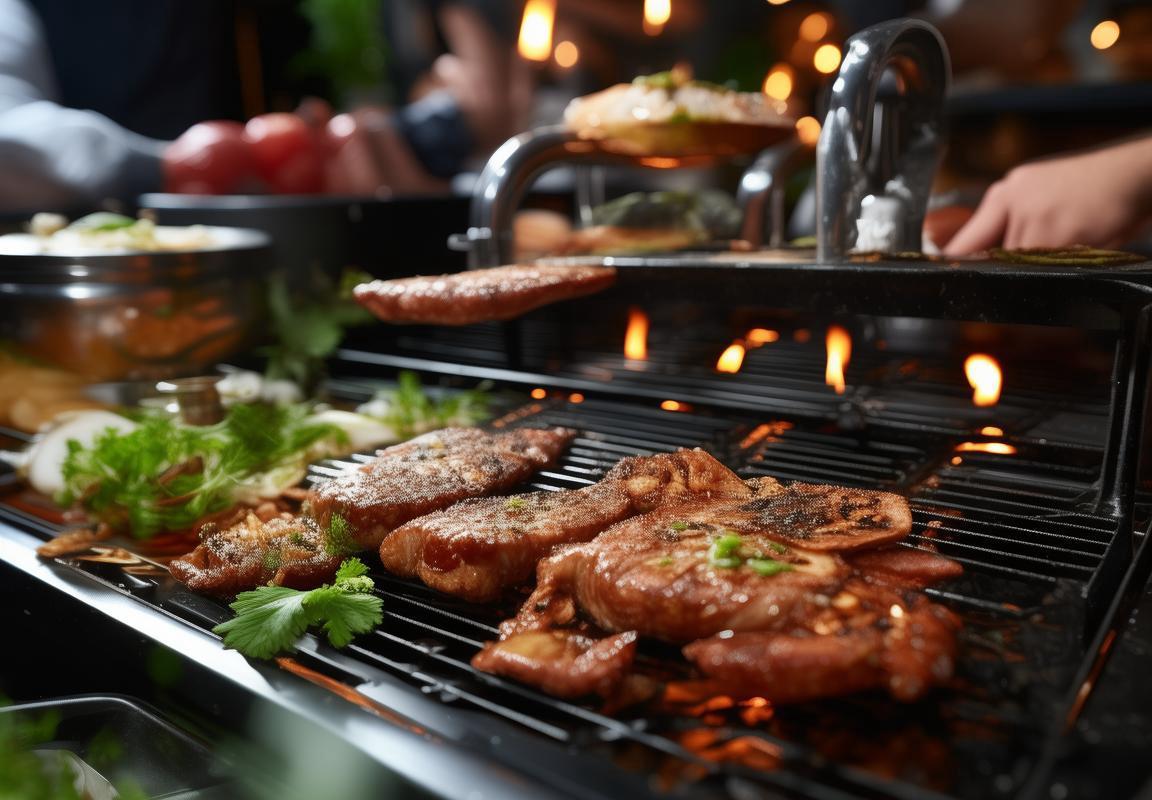
Consumer Preferences and the Impact on Product Design
In the ever-evolving landscape of kitchen appliances, consumer preferences play a pivotal role in shaping product design. This is particularly true for made-to-order contact grills, where the demands of the consumer are at the forefront of innovation. Here’s how these preferences are influencing the design of these versatile cooking devices.
The demand for convenience is skyrocketing, and contact grills are responding by becoming more user-friendly. Consumers are looking for appliances that can simplify their cooking process, and manufacturers are obliging by incorporating features like programmable settings and intuitive interfaces. The sleek, compact designs of these grills are not just about aesthetics; they’re about making the cooking experience more accessible to those with limited space or time.
Sustainability is a growing concern among consumers, and this is reflected in the design of made-to-order contact grills. Eco-conscious buyers are drawn to appliances that are energy-efficient and made from recyclable materials. Designers are responding by creating grills that consume less power and use components that are easier to dispose of or recycle at the end of their lifecycle.
Health consciousness is another driving force in product design. Consumers are increasingly interested in cooking methods that preserve the natural flavors and nutrients of their food. Contact grills, with their ability to cook food with minimal oil, are becoming a popular choice for health-savvy consumers. The design of these grills is evolving to include non-stick surfaces and adjustable heat settings that allow for low-fat cooking without sacrificing taste.
Customization is a trend that’s not just limited to the food itself but extends to the cooking appliances as well. Consumers are looking for contact grills that can be tailored to their specific needs, whether that’s through interchangeable plates for different types of cooking or through smart features that can be controlled via a mobile app. The ability to personalize the cooking experience is becoming a key factor in the design process.
Safety is paramount in kitchen appliances, and contact grills are no exception. Designers are focusing on creating grills that are not only easy to use but also safe. This includes features like automatic shut-off mechanisms, cool-touch handles, and clear, easy-to-read displays. The goal is to minimize the risk of accidents while cooking, ensuring that users can enjoy their meals without worry.
Durability is a silent yet significant preference that influences product design. Consumers want their appliances to last, and contact grills are being designed with long-term use in mind. This means using high-quality materials, robust construction, and components that are less likely to break or wear out over time. The design is not just about looks; it’s about the longevity of the product.
The integration of technology is also reshaping the design of made-to-order contact grills. Smart features like Bluetooth connectivity, which allow for remote control of the grill, are becoming standard. These technological advancements not only enhance the user experience but also open up new possibilities for how contact grills can be used and maintained.
Innovation in cooking techniques is another area where consumer preferences are driving product design. The rise of sous-vide cooking, for example, has led to the development of contact grills that can achieve precise temperature control, making them versatile enough to handle a variety of cooking methods. The design of these grills reflects a commitment to staying ahead of the curve and embracing new culinary trends.
Lastly, the aesthetic appeal of contact grills is becoming more important. Consumers are not just looking for a functional appliance; they want something that complements their kitchen’s style. The design of made-to-order contact grills is evolving to include a range of colors and finishes, allowing users to choose a grill that matches their personal taste and kitchen decor.
In conclusion, the impact of consumer preferences on the design of made-to-order contact grills is profound. By focusing on convenience, sustainability, health, customization, safety, durability, technology integration, innovation, and aesthetics, manufacturers are creating appliances that not only meet but exceed consumer expectations. This dynamic interplay between consumer desires and product design ensures that contact grills continue to be a staple in modern kitchens.
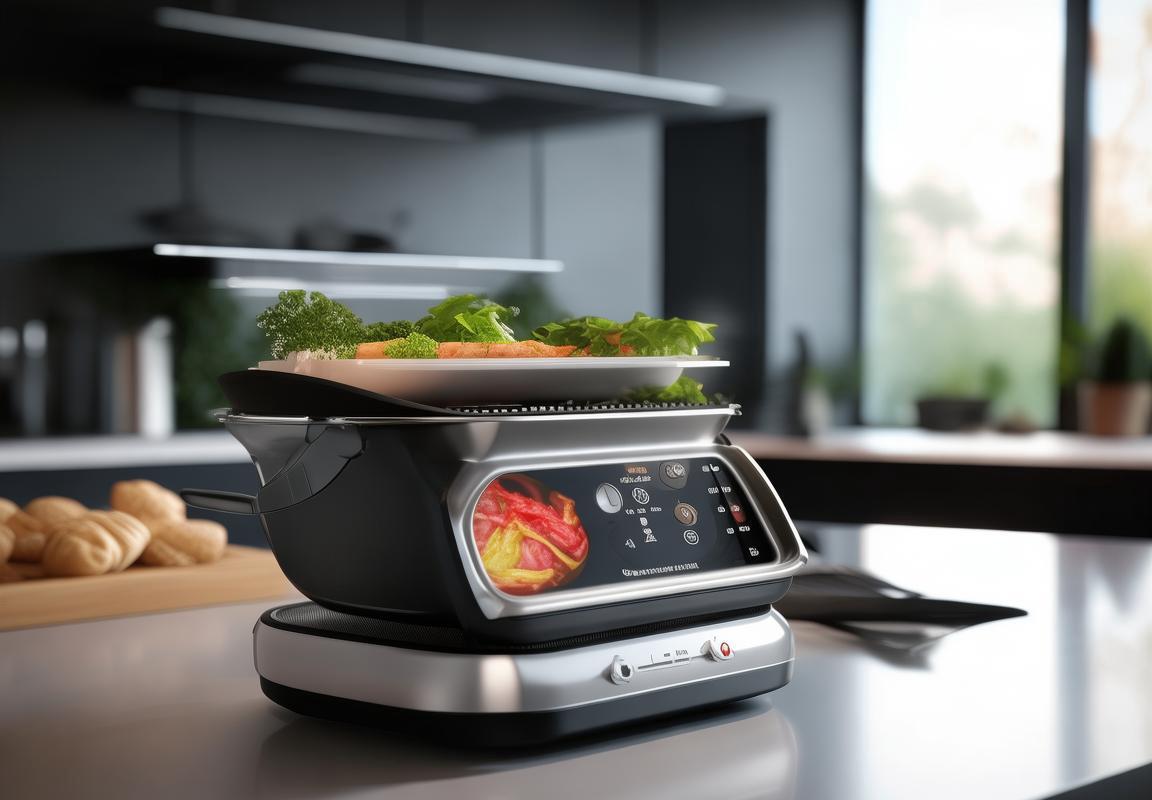
Data-Driven Insights: Market Size and Growth Projections
In the evolving landscape of the, data-driven insights have become invaluable for understanding market trends and forecasting future growth. When it comes to made-to-order contact grills, the numbers tell a compelling story. Let’s delve into the market size and growth projections that shape this dynamic sector.
Consumer demand for convenience and personalized dining experiences has surged, leading to a notable increase in the popularity of made-to-order contact grills. According to recent market reports, the global contact grill market is expected to witness a significant uptick in the coming years. This growth is attributed to various factors, including the surge in health consciousness, the rise of fast-casual dining, and the desire for at-home culinary adventures.
Market research indicates that the market size for made-to-order contact grills is poised to expand at a compounded annual growth rate (CAGR) of approximately 6% over the next five years. This projection underscores the industry’s potential for continued growth, with emerging markets playing a pivotal role in this upward trajectory. As these regions embrace modern cooking technologies, the demand for contact grills is anticipated to soar.
The impact of e-commerce on the contact grill market cannot be overstated. Online sales platforms have democratized access to these appliances, allowing consumers from all walks of life to explore the benefits of made-to-order cooking. This digital penetration has also facilitated data collection and analysis, providing manufacturers with actionable insights into consumer behavior.
One key insight is the preference for compact and portable contact grills. Many consumers are looking for appliances that can easily fit into their kitchens or be taken on the go for tailgating or camping trips. This demand has spurred the development of sleek, space-saving models that are not only efficient but also versatile.
Another important trend is the customization of contact grills to cater to specific dietary needs. Vegetarian, vegan, and gluten-free consumers are driving the creation of specialized grilling surfaces and accessories. The market for these niche products is expected to grow as manufacturers respond to the demand for a wider range of health-conscious options.
Additionally, the integration of smart technology in contact grills is reshaping the market landscape. Smart grills with built-in thermometers, Bluetooth connectivity, and recipe integration are becoming increasingly popular. These features not only enhance the grilling experience but also provide users with data-driven insights into their cooking habits.
In terms of regional distribution, North America currently holds a significant share of the contact grill market, driven by the high penetration of smart home appliances and the strong preference for outdoor cooking. However, Europe is not far behind, with its consumers showing a similar enthusiasm for the latest cooking technologies.
Looking ahead, market projections suggest that the Asia-Pacific region will emerge as a significant growth driver. The region’s rapidly growing middle class and increasing disposable incomes are fueling the demand for high-quality kitchen appliances, including made-to-order contact grills.
The market size and growth projections for made-to-order contact grills are further bolstered by the rise of health and wellness trends. Consumers are more aware of the nutritional value of their food and are willing to invest in appliances that allow them to prepare healthy, homemade meals. This shift towards healthier eating habits is expected to continue, driving the demand for contact grills that offer precise temperature control and consistent cooking results.
In conclusion, the data-driven insights into the market size and growth projections for made-to-order contact grills paint a picture of a rapidly expanding industry. As consumer preferences evolve, so too will the design and functionality of these appliances. With continued innovation and a focus on health-conscious consumers, the future looks bright for the contact grill market.
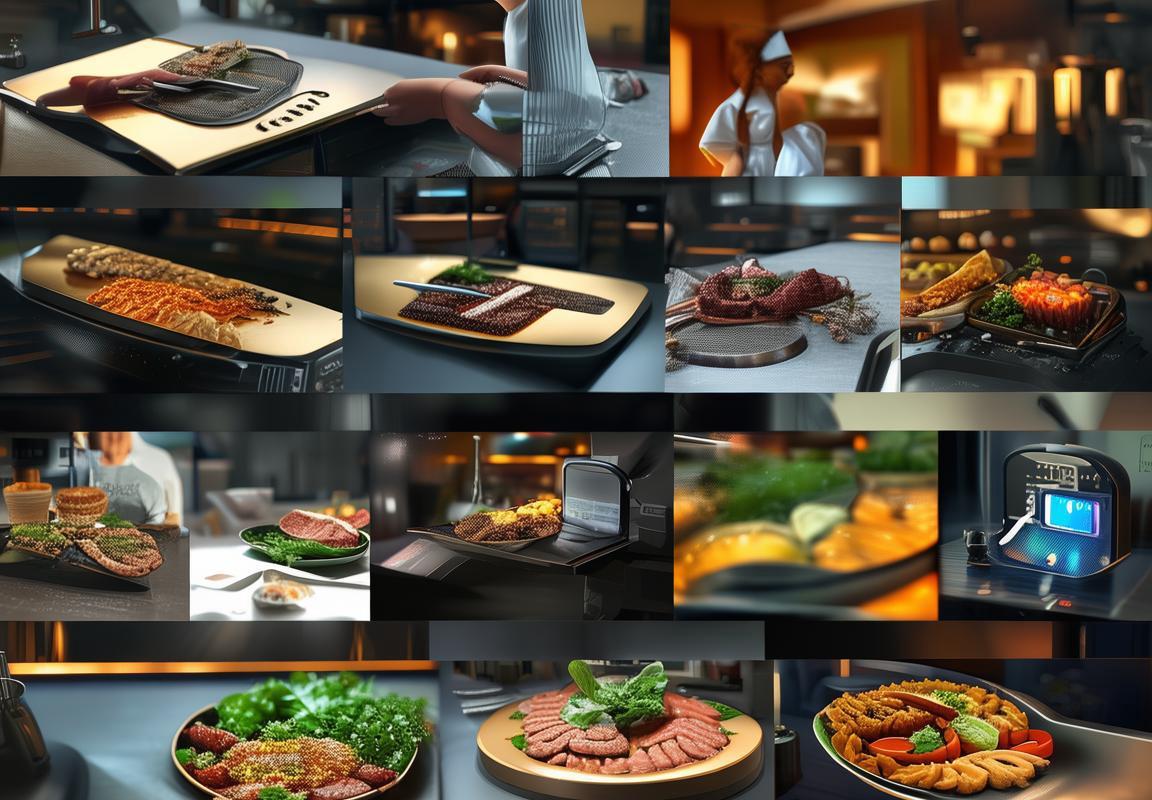
Innovations in Contact Grill Technology
In recent years, the contact grill market has seen a surge in technological advancements, reshaping the way consumers experience grilling. These innovations have not only enhanced the functionality of contact grills but also expanded their appeal to a broader audience. Here’s a closer look at some of the key technological innovations in contact grill technology:
Grill Surface AdvancementsThe surface of contact grills has evolved significantly, with manufacturers focusing on materials that offer superior heat distribution and non-stick properties. High-quality stainless steel and ceramic coatings have become standard, ensuring that food releases easily and maintains its natural flavors. Some models now feature advanced coatings that are even more durable and resistant to wear, extending the life of the grill.
Smart Cooking TechnologyThe integration of smart technology into contact grills has revolutionized the cooking experience. Many modern grills come with digital temperature controls, allowing users to set precise cooking temperatures. Some models even have built-in timers and temperature probes that can monitor the internal temperature of the food, ensuring it’s cooked to perfection every time. This level of control has made contact grills a favorite among both novices and seasoned chefs.
Touchscreen InterfacesTraditional button controls have been replaced by sleek, easy-to-use touchscreen interfaces in many new contact grill models. These interfaces offer a more intuitive experience, with clear displays and simple navigation. Users can easily adjust settings, select cooking modes, and monitor the grill’s status without the need for complex menus or multiple buttons.
Variable Heat ZonesIn the past, contact grills were limited to a single heat source. However, recent innovations include the introduction of variable heat zones. These zones allow users to cook different types of food simultaneously at different temperatures. For example, one zone can be set to sear a steak while another is kept at a lower heat for delicate fish or vegetables. This feature adds versatility to the grill and makes it possible to prepare a variety of dishes without the need for multiple cooking appliances.
Automated Cleaning SystemsCleaning a grill can be a time-consuming task, but some of the latest contact grill models come with automated cleaning systems. These systems use steam or high-pressure water jets to clean the grill surface, making the process quick and easy. Some grills even have self-cleaning cycles that can be initiated with a simple button press, further reducing the effort required to maintain the grill.
Spatula and Tool AttachmentsModern contact grills often come with a range of attachments and accessories that enhance their functionality. These include spatula and tool attachments that are specifically designed for use with the grill’s surface. These attachments are often made from heat-resistant materials and can be securely stored on the grill when not in use, ensuring they’re always at hand.
Safety FeaturesSafety has always been a priority in grill design, and recent innovations have brought even more safety features to contact grills. These include safety locks that prevent accidental operation, cool-to-the-touch handles, and child safety features. Some models also have safety sensors that automatically shut off the grill if it detects a loss of power or if the temperature exceeds safe levels.
Eco-Friendly DesignAs environmental concerns grow, manufacturers are focusing on creating more eco-friendly contact grills. This includes using sustainable materials for construction, energy-efficient heating elements, and easy-to-recycle components. Some grills are also designed to be more compact, saving space and reducing the environmental footprint.
Customizable Cooking ProgramsMany contact grills now offer customizable cooking programs that allow users to save their favorite settings. This feature is particularly useful for those who frequently cook the same types of food, as it eliminates the need to reset the grill each time. Users can program the grill to cook at specific temperatures for a set duration, ensuring consistent results every time.
These technological innovations have not only made contact grills more convenient and user-friendly but have also expanded their capabilities, making them a must-have for any kitchen. Whether you’re a seasoned grill master or just starting out, these advancements ensure that the contact grill remains a versatile and efficient cooking tool.
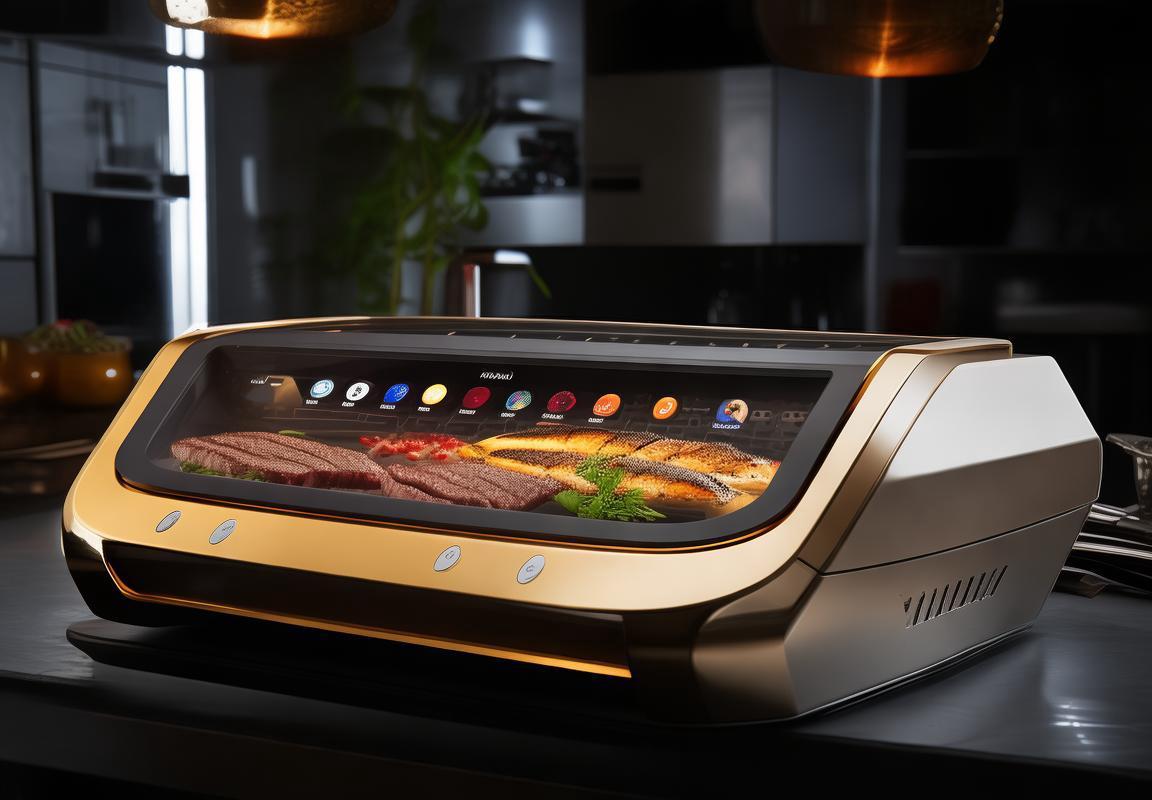
Challenges and Opportunities in the Contact Grill Industry
The contact grill industry has witnessed a surge in demand, driven by consumer preferences and technological advancements. Despite the growth, it’s crucial to acknowledge the challenges and opportunities that lie ahead. From navigating market regulations to embracing eco-friendly designs, here’s a closer look at the multifaceted landscape of the contact grill industry.
Consumer health and wellness trends continue to shape the industry, with a growing preference for cooking methods that offer healthier alternatives. The demand for contact grills, which cook food with minimal oil, has soared as consumers seek to reduce their intake of unhealthy fats. This shift has spurred innovation in product design, focusing on features that enhance both taste and nutritional value.
Safety concerns have always been a focal point in the appliance industry, and contact grills are no exception. As the industry evolves, manufacturers must address safety standards and certifications to ensure consumer confidence. Advances in heat distribution technology and automatic shut-off features have become integral in meeting these stringent requirements.
The rise of smart technology has opened new doors for contact grill manufacturers. Integration with smartphones and smart home systems allows users to control their grills remotely, adjusting temperature and cooking times with ease. This convenience factor has become a significant draw for tech-savvy consumers, who appreciate the ability to multitask while cooking.
One of the most notable opportunities in the contact grill industry is the expansion into international markets. As the health-conscious lifestyle becomes more global, there’s a growing audience for contact grills in regions like Asia and Latin America. Adapting to local preferences and cultural norms is key to successful market penetration.
Environmental consciousness is another area ripe for opportunity. As consumers become more aware of their carbon footprint, there’s a growing interest in eco-friendly appliances. contact grill manufacturers are exploring sustainable materials and energy-efficient designs to meet this demand.
However, with these opportunities come challenges. One significant challenge is the competition from alternative cooking methods. The popularity of outdoor cooking, such as traditional grilling and barbecuing, poses a threat to the contact grill market. To combat this, manufacturers are focusing on innovative features that differentiate contact grills from other cooking methods.
Regulatory compliance is also a challenge that must be addressed. Different countries have varying standards for appliance safety and emissions. Navigating these regulations requires a thorough understanding of local markets and the ability to adapt production processes accordingly.
Cost considerations are another area of concern. While contact grills have become more accessible to a broader consumer base, there’s still a segment of the market that may be deterred by price. Finding a balance between affordability and quality is essential for sustainable growth.
Moreover, the industry faces the challenge of educating consumers about the benefits of contact grilling. Many consumers are unaware of the healthier cooking options that contact grills offer. Marketing campaigns and demonstrations can help bridge this knowledge gap and drive demand.
Despite these challenges, the contact grill industry is poised for significant growth. By embracing innovation, addressing consumer preferences, and navigating the complexities of international markets, manufacturers can capitalize on the opportunities that lie ahead. The key lies in staying agile, responsive to market trends, and committed to delivering products that not only meet but exceed consumer expectations.
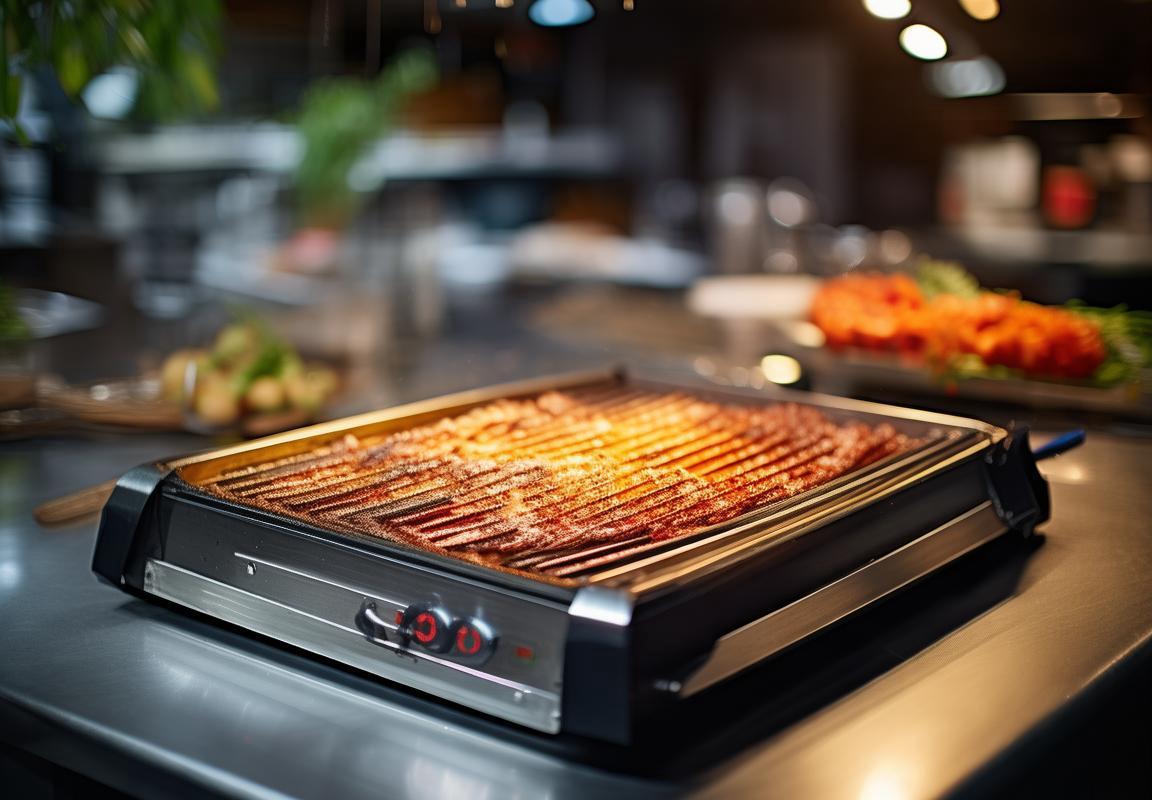
Case Studies: Successful Made-to-Order Contact Grill Brands
In the realm of contact grill brands, there are a few that have not only carved out a niche for themselves but have also become synonymous with success in the made-to-order cuisine market. Let’s delve into the stories of some of these brands that have thrived on innovation, customer loyalty, and a deep understanding of market trends.
The first brand to highlight is Grillit, a company that has managed to blend traditional grilling with modern convenience. Their contact grills are not just kitchen appliances but are designed to cater to the growing demand for personalized and health-conscious cooking. Grillit’s success lies in their commitment to offering a variety of cooking options, from searing steaks to grilling vegetables, all with the touch of a button.
Grillit’s product design has been influenced by consumer preferences for ease of use and clean-up. The grills come with non-stick surfaces and adjustable heat settings, making them appealing to busy professionals and families alike. The brand has also leveraged technology to offer smart grilling features, such as Bluetooth connectivity, allowing users to control their grills remotely through their smartphones.
Another standout brand in the made-to-order contact grill category is Grilleria. What sets Grilleria apart is their focus on sustainability and eco-friendly materials. Their contact grills are made from recycled steel and are designed to be durable and long-lasting. This commitment to the environment has resonated with consumers who are increasingly concerned about the carbon footprint of their kitchen appliances.
Grilleria’s innovation doesn’t stop at materials; their grills also feature a unique air circulation system that ensures even cooking without the need for flipping. This feature has become a hit among consumers looking for hassle-free grilling experiences. The brand has also invested in a robust marketing strategy, using social media to showcase their eco-friendly products and engage with a community of environmentally conscious consumers.
The third brand worth mentioning is SizzlePal, which has gained popularity for its range of compact and portable contact grills. SizzlePal’s products cater to a segment of consumers who value convenience and portability, whether they’re camping, traveling, or simply looking for a quick and easy way to prepare meals at home.
What makes SizzlePal stand out is their attention to detail in product design. Their grills are lightweight yet sturdy, with features like foldable legs and removable drip trays for easy storage and cleaning. The brand has also introduced a range of accessories, such as marinade kits and grill covers, to enhance the grilling experience and provide added value to their customers.
These case studies illustrate several key points about the contact grill industry. One is the importance of understanding and anticipating consumer needs. Brands like Grillit, Grilleria, and SizzlePal have done this by offering products that not only meet current demands but also address future trends, such as sustainability and convenience.
Another important factor is the role of technology in driving innovation. The integration of smart features and eco-friendly materials showcases how technology can be a catalyst for change within the industry. These brands have leveraged technology to create unique selling points that differentiate them from competitors.
Furthermore, the success of these brands underscores the power of branding and marketing. By using social media and other digital platforms, they have been able to reach a wide audience and build a loyal customer base. Their marketing strategies are not just about selling products; they are about creating a community around a shared passion for great food and environmental responsibility.
In conclusion, the contact grill industry is ripe with opportunities for brands that are willing to innovate and adapt. By focusing on consumer preferences, embracing technological advancements, and crafting strong branding and marketing strategies, these successful made-to-order contact grill brands have set the stage for continued growth and success.
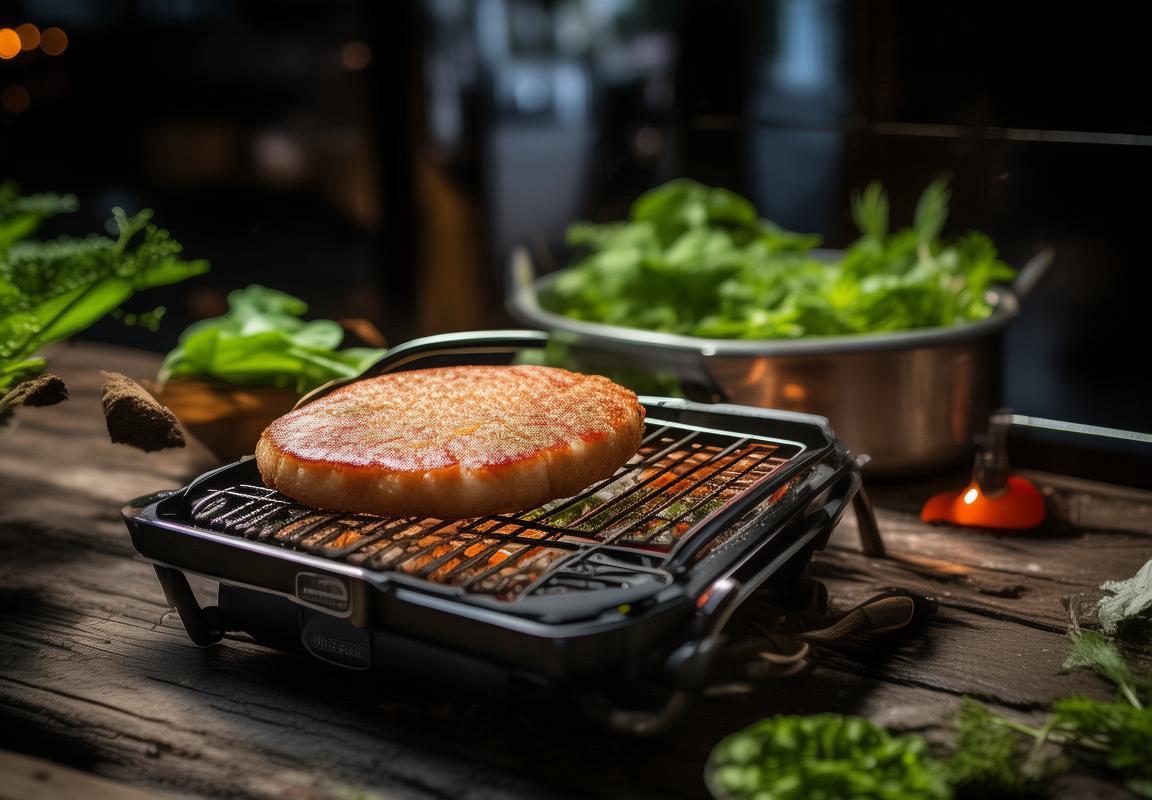
Conclusion: The Future of Contact Grills and Made-to-Order Meals
The evolution of contact grills has been marked by a series of innovations that have not only enhanced the cooking experience but also reshaped consumer preferences. From the classic flat-top grills to the modern multi-functional models, the industry has seen a steady transformation. These advancements have been driven by a combination of technology, market demand, and the quest for convenience.
The introduction of adjustable heat settings has allowed users to tailor the cooking process to their specific needs, whether it’s searing steaks to perfection or gently grilling vegetables. The integration of non-stick surfaces has made cleanup easier and has broadened the range of ingredients that can be cooked on these grills. Moreover, the development of electric contact grills has eliminated the need for charcoal or gas, appealing to those who prefer a cleaner, more controlled cooking environment.
Safety features have also been a focal point of innovation. Locking mechanisms, automatic shut-off systems, and temperature control sensors have been incorporated to prevent accidents and ensure that food is cooked evenly. These features have not only made contact grills safer but have also extended their appeal to families and individuals with varying cooking expertise.
The rise of made-to-order cuisine has had a significant impact on the design of contact grills. Consumers today are more health-conscious and value the ability to customize their meals. As a result, contact grills with adjustable cooking plates that can accommodate different types of ingredients have become increasingly popular. These grills allow users to create personalized meals, from a charred burger patty to a perfectly grilled vegetable side, all in one appliance.
In recent years, the integration of smart technology has been a game-changer. Contact grills with built-in Bluetooth capabilities allow users to control the grill remotely via a smartphone app. This feature is particularly beneficial for those who want to prepare a meal while multitasking or for those who enjoy a hands-off cooking experience. The ability to monitor temperature, adjust settings, and even set timers from anywhere in the house has made contact grills more versatile and convenient.
Environmental considerations have also influenced the design of contact grills. As consumers become more aware of their carbon footprint, manufacturers have responded by creating energy-efficient models. These grills not only save on electricity but also reduce the overall environmental impact. Additionally, the use of sustainable materials in the construction of these appliances has gained traction, appealing to eco-conscious consumers.
Despite these advancements, the contact grill industry faces challenges. One major challenge is the competition from other cooking appliances, such as outdoor grills and indoor ovens. To stay relevant, manufacturers must continue to innovate and offer unique features that differentiate their products. Another challenge is the need to adapt to changing consumer preferences, which can be influenced by health trends, cultural shifts, and technological advancements.
The opportunity for the contact grill industry lies in its ability to evolve with these changes. By staying attuned to consumer needs and market trends, manufacturers can develop products that not only meet but exceed expectations. This could involve creating grills that are not only versatile but also portable, making them suitable for camping trips, tailgating, and even small apartments.
Case studies of successful made-to-order contact grill brands highlight the importance of innovation and market understanding. Brands like George Foreman and Cuisinart have been able to maintain their market dominance by continuously introducing new products that cater to the evolving tastes of consumers. Their success can be attributed to a combination of quality construction, user-friendly designs, and strategic marketing campaigns.
In conclusion, the future of contact grills and made-to-order meals looks promising. As technology continues to advance, we can expect to see even more innovative features and designs that enhance the cooking experience. The key to success in this industry will be the ability to anticipate and respond to consumer preferences, while also addressing the challenges that come with maintaining a competitive edge. With the right approach, contact grills are poised to remain a staple in kitchens around the world, offering convenience, customization, and culinary versatility.